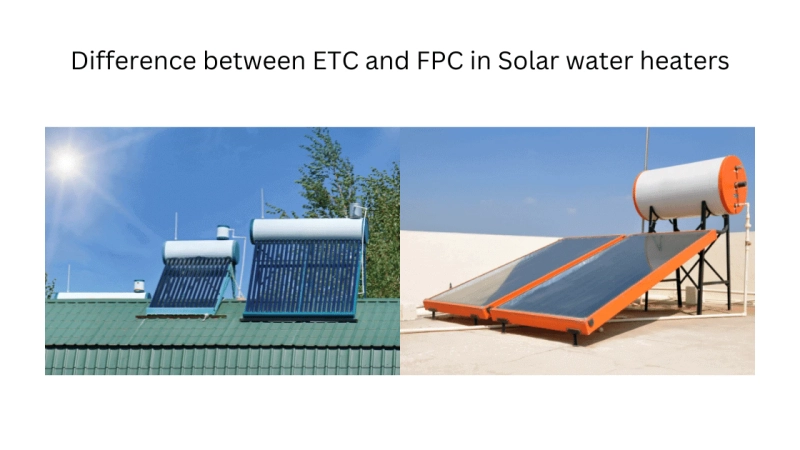The Sun continues to be the most potent and reliable source of energy for the planet, and it is also completely free of cost, despite the fact that the majority of its natural energy sources are in danger. Since solar energy has so many advantages, the majority of people in India are now moving to solar-enabled technology like solar water heaters in order to maximise the use of the free sun energy. Solar water heater manufacturing machinery in India has risen sharply over the years because many households and businesses have started to use solar water heaters for their daily warm water activities. Due to the government’s subsidy on solar equipment and lower electricity bills, solar water heaters are the best alternatives for warm water activities.
Evacuated Tube Collector and Flat Plate Collector
As you may know, solar water heaters use the sun's energy to warm the water by absorbing its rays. Solar heaters have collectors in order to carry out this purpose. In solar water heaters, evacuated tube collectors and flat plate collectors are the two main types of collectors. Glass tubes are stacked in a few parallel rows in Evacuated Tube Collectors or ETC. The air between the two glass walls that make up each tube is evacuated to produce a vacuum, which stops the loss of heat. This design makes evacuated tube collectors very effective.
One of the first kinds of collectors were flat plate collectors which are made out of a metal box that is insulated to keep the heat in and an absorber plate to catch the scattered sunshine. Heat from the surroundings is absorbed and transmitted to a liquid flowing through the copper pipes which summarises the working of these collectors.
Difference between Evacuated Tube Collector and Flat Plate Collector
Both ETC and FPC are different and have their own set of benefits. We will compare both of them under different important parameters below
Cost of purchase
Evacuated tube collectors are slightly more expensive to buy than flat plate collectors in terms of cost of purchase. This is so that flat plate collectors may be produced and designed more easily. However, the cost per BTU (British Thermal Unit) for evacuated tube collectors is lower . BTU stands for the energy needed to raise the temperature of one pound of water by one degree Fahrenheit.
Efficiency of heating
With evacuated tube collectors, you may get hot water that is up to 200 degrees Fahrenheit quicker. They have exceptional heating efficiency as a result. Flat plate collectors may heat water more slowly and provide it at temperatures of up to 140 degrees Fahrenheit. They are therefore appropriate for residences that don't need a lot of hot water.
Durability
Flat plate collectors are more susceptible to corrosion since they are constructed of copper pipes. The longevity of the collector may be impacted by frequent drips on the solar absorber and water condensation on the interior of the glazed plate. Flat plate collectors may, however, often be easily fixed.
The vacuum is a factor in the heating efficiency of evacuated tube collectors. The glass tubes in an evacuated tube collector will need to be changed if the vacuum fails.
Installation
Evacuated tubes receive the sun's rays at a 90-degree angle because of their cylinder form. No matter how they are put, their absorption is therefore optimal. The flat plate collectors only receive the best sunlight because of their design around the middle of the day. Consequently, they must be positioned at a precise angle and in a slanting position.
0


